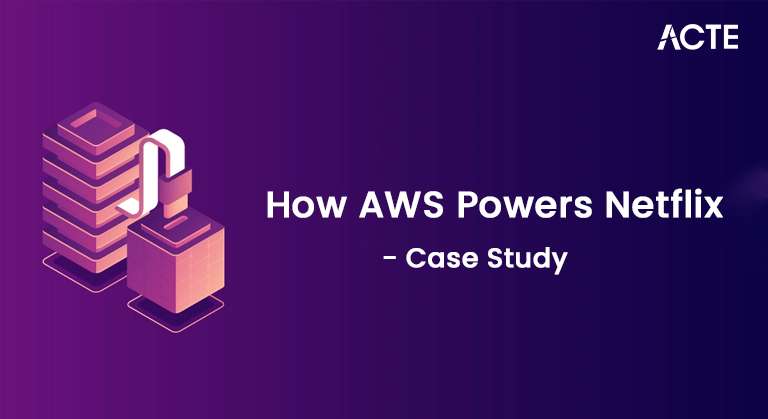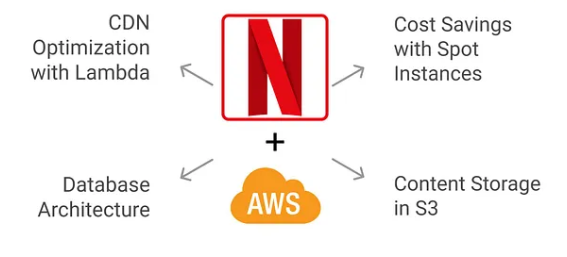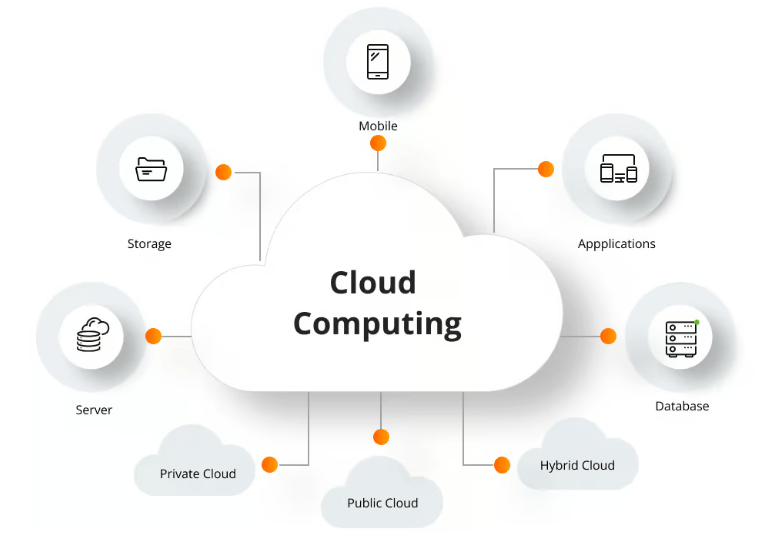
- Introduction to Netflix’s Cloud Journey
- Why Netflix Moved to AWS
- AWS Services Used by Netflix
- AWS Auto Scaling for Netflix’s Traffic Spikes
- Content Delivery with AWS CloudFront
- Netflix’s Use of AWS Lambda for Serverless Computing
- Data Storage and Management with Amazon S3
- How AWS Helps Netflix with Security and Compliance
- The Role of AI and Machine Learning in Netflix’s AWS Architecture
- Challenges Netflix Overcame with AWS
- Key Takeaways from Netflix’s AWS Success
- Conclusion
Introduction to Netflix’s Cloud Journey
Netflix, one of the world’s leading streaming services, has revolutionized the entertainment industry with its vast library of on-demand content. To support its massive global user base and deliver an exceptional viewing experience, Netflix has made a significant transition to the cloud an effort made possible through how AWS powers Netflix. Over the years, Netflix has migrated almost its entire infrastructure to Amazon Web Services (AWS), benefiting from the scalability, flexibility, and reliability that the cloud offers. AWS Training enables professionals to understand and implement these cloud solutions effectively, maximizing the benefits of AWS. Netflix’s cloud journey began as the company looked for ways to scale efficiently, reduce operational complexity, and improve its infrastructure to handle the growing demand for its streaming service. By moving to the cloud, Netflix gained the agility to deliver content globally, manage huge amounts of data, and respond to traffic fluctuations with greater efficiency.
Want to Obtaining Your AWS Certificate? View The AWS Course Offered By ACTE Right Now!
Why Netflix Moved to AWS
- Scalability: As Netflix expanded its subscriber base globally, it faced challenges in maintaining performance during traffic surges, especially during new content releases or events. AWS’s ability to scale resources on-demand ensured that Netflix could meet the needs of its growing user base without over-provisioning infrastructure.
- Global Reach: With millions of users across different continents, Netflix needed a global infrastructure that could support fast, reliable, and high-quality streaming. AWS’s vast network of data centers around the world offered Netflix the global presence it required.
- Cost Efficiency: Prior to moving to AWS, Netflix had a large on-premises data center infrastructure. Migrating to the cloud allowed them to reduce hardware costs and improve the economics of their operations by paying only for the resources they used.
- Reliability and Redundancy: AWS provides high availability, fault tolerance, and disaster recovery features that helped Netflix ensure minimal downtime and disruptions to streaming services, especially during high-traffic events like premieres or server updates.
- Agility and Innovation: With AWS’s flexible platform, Netflix could quickly adopt new technologies, experiment with new features, and rapidly roll out improvements. This agility has been crucial in keeping pace with evolving customer demands and technological trends.
- Amazon EC2 (Elastic Compute Cloud): Netflix utilizes EC2 instances for its compute capacity. EC2 enables Netflix to scale up or down based on demand, ensuring that the service remains responsive during peak usage times. Understanding AWS Fargate further enhances the flexibility and scalability of their infrastructure by eliminating the need to manage servers while still providing the same performance.
- Amazon S3 (Simple Storage Service): Netflix uses S3 to store massive amounts of data, including user profiles, content metadata, and video assets. S3’s durability, scalability, and low cost make it an ideal solution for storing Netflix’s large media library.
- Amazon RDS (Relational Database Service): Netflix uses RDS to manage relational databases, providing a scalable and managed database service that supports its applications.
- AWS Lambda: Netflix leverages AWS Lambda for serverless computing to handle various backend processes, reducing the complexity of managing servers while maintaining scalability.
- Amazon CloudFront: CloudFront, AWS’s content delivery network (CDN), helps Netflix deliver streaming content with low latency and high performance to users worldwide.
- Amazon DynamoDB: A fully managed NoSQL database service that Netflix uses for real-time data storage, such as tracking viewing history, recommendations, and user preferences.
- AWS Kinesis: For real-time data streaming, Netflix can process and analyze large amounts of streaming data for analytics and monitoring.
- Rapid development and deployment are possible with Lambda, speeding up innovation.
- Scalability is built-in, as Lambda automatically scales with the volume of incoming events.
- Integrating Power BI With Azure enhances this by enabling seamless data visualization and analysis, allowing for better insights into event-driven processes and performance.
- AWS Lambda is a crucial part of Netflix’s cloud infrastructure, supporting its serverless computing model.
- User data processing is performed to analyze viewing habits and personalize content recommendations.
- Log processing is automated, managing massive log data generated by the platform for monitoring and analytics.
- Cost efficiency is improved Netflix pays only for compute time used, reducing expenses during idle times.
- Event-driven automation allows Netflix to trigger specific workflows in response to user actions or system events.
- No server management is required Lambda lets Netflix run code automatically without provisioning or managing servers.
- Video transcoding is handled through Lambda, converting media files into various formats for smooth streaming across devices.
- Encryption: Netflix uses encryption both in transit (via SSL/TLS) and at rest (via S3 and other AWS storage services) to protect user data and content from unauthorized access.
- AWS Shield and WAF: AWS Shield protects Netflix from Distributed Denial of Service (DDoS) attacks, while AWS Web Application Firewall (WAF) provides additional security against common web exploits.
- Compliance Programs: AWS maintains various certifications and compliance programs, such as SOC 2, SOC 3, and GDPR, helping Netflix meet industry-specific regulatory requirements.
- Logging and Auditing: With services like AWS CloudTrail, Netflix can monitor and audit all user and administrative activities in the AWS environment, enhancing security visibility and control.
- Identity and Access Management (IAM): AWS IAM helps Netflix control and manage access to its AWS resources. By using IAM roles and policies, Netflix ensures that only authorized personnel and services can access sensitive resources, as outlined in the Comprehensive Guide to AWS Inspector.
- Predictive Analytics: Netflix uses machine learning models to forecast demand, predict content popularity, and optimize inventory and licensing decisions.
- Fraud Detection: AI helps Netflix detect unusual user behaviors, preventing account fraud and abuse and ensuring the platform’s integrity.
- Content Quality Optimization: AI and machine learning are also used to optimize the quality of the video stream. Netflix uses algorithms to adapt the video bitrate and resolution in real-time based on network conditions, ensuring smooth playback.
- Personalized Recommendations: Netflix leverages machine learning models to analyze user behavior and provide personalized content recommendations. By analyzing vast amounts of data, Netflix’s AI algorithms suggest shows and movies that are likely to interest individual users, improving engagement.
- Scalability is crucial for handling massive global demand, especially during traffic spikes. AWS’s services, such as EC2, Auto Scaling, and CloudFront, enable Netflix to scale resources efficiently.
- Serverless computing with AWS Lambda can significantly reduce operational complexity and costs by allowing businesses to focus on code and logic rather than infrastructure management.
- Global content delivery content delivery requires a robust CDN, and AWS CloudFront is instrumental in ensuring smooth, low-latency streaming.
- Data storage and management are critical, and AWS’s scalable solutions, such as S3 and DynamoDB, provide Netflix with reliable and cost-effective data management. AWS Training helps professionals leverage these services effectively for optimal results.

AWS Services Used by Netflix
AWS Auto Scaling for Netflix’s Traffic Spikes
One of Netflix’s most significant challenges is managing traffic spikes, especially during peak usage times, such as when new content is released or during major sporting events. AWS Auto Scaling plays a critical role in handling these surges in traffic. Netflix uses auto scaling to adjust its infrastructure dynamically based on the volume of incoming traffic. The service automatically increases or decreases the number of EC2 instances and resources based on predefined rules, ensuring that Netflix can maintain optimal performance without over- or under-provisioning resources. Exploring AWS Storage Services further complements this by offering scalable and reliable storage solutions that integrate seamlessly with compute resources for efficient data management. For example, during the launch of a new Netflix original series, Auto Scaling ensures that enough computing power is allocated to handle the surge in user activity. Once the traffic returns to normal levels, the resources are scaled down, optimizing cost efficiency.
To Explore AWS in Depth, Check Out Our Comprehensive AWS Course To Gain Insights From Our Experts!
Content Delivery with AWS CloudFront
Content delivery plays a vital role in Netflix’s ability to provide smooth and high-quality streaming experiences to users worldwide. To achieve this, Netflix leverages Amazon CloudFront, AWS’s robust content delivery network (CDN). CloudFront caches Netflix’s content at globally distributed edge locations, bringing data physically closer to viewers. This significantly reduces latency and ensures fast, reliable streaming even in geographically remote areas.

By minimizing the distance data must travel, CloudFront enables quick start times and consistent playback quality. Furthermore, it alleviates pressure on Netflix’s origin servers by handling the bulk of traffic, especially during peak times. This approach not only boosts performance but also enhances scalability and cost-efficiency. The vast network of edge servers ensures users enjoy seamless access to content, regardless of their location. Through CloudFront’s support, Netflix maintains the capacity to serve millions of simultaneous streams while maintaining its reputation for exceptional user experience and video quality.
Netflix’s Use of AWS Lambda for Serverless Computing
Data Storage and Management with Amazon S3
Netflix relies heavily on Amazon S3 as a core component of its storage infrastructure, enabling efficient management of vast amounts of content data, user data, and metadata. S3 is used to store a wide range of data types critical to Netflix’s operations. The platform’s extensive library of movies and TV shows is housed on S3, allowing for fast, reliable access and seamless streaming. In addition to video content, S3 stores user data such as profiles, viewing history, and preferences, which are essential for personalization and recommendation features. AWS Training equips individuals with the skills to efficiently manage and optimize such data using S3 and other AWS services. Metadata including content descriptions, ratings, and subtitles is also stored and managed on S3 to support a rich user experience. With its highly scalable, durable, and cost-effective architecture, S3 allows Netflix to handle massive data volumes efficiently. Moreover, S3’s versioning capabilities enable Netflix to track data changes over time, ensuring consistency, reliability, and resilience across its global content delivery system.
Are You Considering Pursuing a AWS Master’s Degree? Enroll For AWS Masters Course Today!
How AWS Helps Netflix with Security and Compliance
The Role of AI and Machine Learning in Netflix’s AWS Architecture
Challenges Netflix Overcame with AWS
As Netflix migrated to the cloud and expanded its services globally, it encountered several critical challenges that it successfully addressed using AWS. One major hurdle was scalability managing sudden traffic spikes during popular content launches. AWS Auto Scaling enabled Netflix to dynamically adjust resources, ensuring smooth performance without over-provisioning. Another challenge was global content delivery, where maintaining high-quality, low-latency streaming worldwide was essential, as discussed in Azure Arc Explained. By leveraging Amazon CloudFront’s extensive content delivery network, Netflix significantly enhanced global streaming performance. Data management also posed complexity, as Netflix had to handle vast volumes of content and user data. AWS services like Amazon S3 and DynamoDB provided scalable and reliable solutions for storing and processing this data. Finally, security was a top concern. AWS’s robust security features helped Netflix protect sensitive user information and comply with international data protection regulations, ensuring a secure and trusted viewing experience across its global user base.
Go Through These AWS Interview Questions & Answer to Excel in Your Upcoming Interview.
Key Takeaways from Netflix’s AWS Success
Conclusion
In conclusion, AWS has been instrumental in enabling Netflix to scale, optimize, and secure its streaming platform as it expands globally. By leveraging AWS services like Auto Scaling, CloudFront, S3, DynamoDB, and Lambda, Netflix has been able to manage massive volumes of content and user data efficiently while maintaining high performance and low latency for users worldwide. The flexibility of AWS’s cloud infrastructure has allowed Netflix to seamlessly adjust resources to handle traffic surges during popular content releases, ensuring uninterrupted streaming even during peak times. Additionally, the use of AWS’s security features has ensured that user data remains protected and that Netflix complies with international regulations, enhancing customer trust. Furthermore, AWS’s scalable and cost-effective solutions have enabled Netflix to innovate rapidly while reducing operational complexity and overhead. By adopting AWS, Netflix has not only transformed how content is delivered but also redefined the future of entertainment streaming. This collaboration exemplifies how cloud technologies can drive success in a highly competitive digital landscape.




